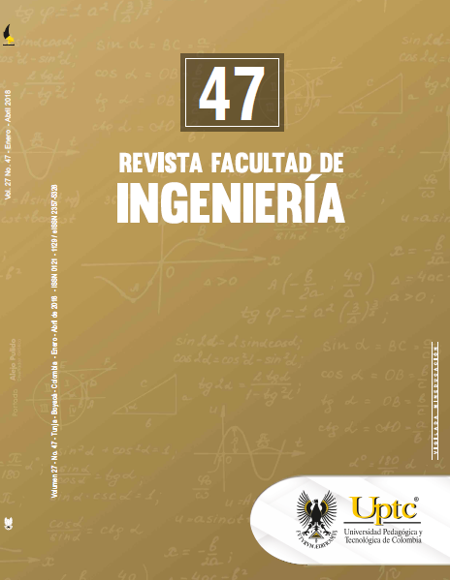Effect of cutting parameters on surface roughness in turning of annealed AISI-1020 steel

Abstract
This study focuses on the effects of cutting parameters such as cutting speed (Vc), feed rate (f), and depth of cut (d) on roughness induced on the surface of annealed AISI 1020 steel when machined by turning using carbide insert tools. The results indicated that surface roughness increased when feed rate increased and cutting speed decreased. Depth of cut slightly influenced roughness. Analysis of variance and multiple regression techniques were used to formulate a quantitative equation for estimating predicted values of roughness as functions of the cutting parameters. The results showed that cutting speed is the most influencing parameter on surface roughness (69.35%), followed by feed rate (30.13%), while depth of cut failed to affect the responses substantially (0.52%). The proposed model can be used to select the optimum parameters for minimum surface roughness in metal turning.Keywords
AISI 1020, ANOVA, cutting speed, depth of cut, feed rate, surface roughness, turning
References
- D. P. Selvaraj, and P. Chandramohan, “Influence of cutting speed, feed rate and bulk texture on the surface finish of nitrogen alloyed duplex stainless steels during dry turning,” Engineering, vol. 2 (6), pp. 453-460, 2010. DOI: http://doi.org/10.4236/eng.2010.26059. DOI: https://doi.org/10.4236/eng.2010.26059
- D. P. Selvaraj, and P. Chandramohan, “Optimization of surface roughness of AISI 304 austenitic stainless steel in dry turning operation using Taguchi design method,” Journal of Engineering Science and Technology, vol. 5 (3), pp. 293- 301, 2010.
- B.A. Khidhir, and B. Mohamed, “Analyzing the effect of cutting parameters on surface roughness and tool wear when machining nickel based Hastelloy – 276,” IOP Conf. Series: Materials Science and Engineering, vol. 17, pp. 012043-012053, 2011. DOI: http://doi.org/10.1088/1757-899X/17/1/012043. DOI: https://doi.org/10.1088/1757-899X/17/1/012043
- C. J. Rao, D. Nageswara, and P. Srihari, “Influence of cutting parameters on cutting force and surface finish in turning operation,” Procedia Engineering, vol. 64, pp. 1405 – 1415, 2013. DOI: http://doi.org/10.1016/j.proeng.2013.09.222. DOI: https://doi.org/10.1016/j.proeng.2013.09.222
- M. Hanief, and M. F. Wani, “Influence of cutting parameters on surface roughness of red brass (C23000) in turning using exponential model,” Hidráulica, vol. 3, pp. 55-58, 2015.
- P. Deepakkumar, and M. Sadaiah, “Investigations on finish turning of AISI 4340 steel in different cutting environments by CBN insert,” International Journal of Engineering Science and Technology, vol. 3 (10), pp. 7690-7706, 2011.
- D. Deepak, and B. Rajendra, “Investigations on the surface roughness produced in turning of AL 6061 (as-cast) by Taguchi method,” International Journal of Research in Engineering and Technology, vol. 4 (8), pp. 295-298, Aug. 2015. DOI: http://doi.org/10.15623/ijret.2015.0408051. DOI: https://doi.org/10.15623/ijret.2015.0408051
- C. H. Che-Haron, and A. Jawaid, “The effect of machining on surface integrity of titanium alloy Ti–6% Al–4% V,” Journal of Materials Processing Technology, vol. 166 (2), pp. 188-192, Aug. 2005. DOI: http://doi.org/10.1016/j.jmatprotec.2004.08.012. DOI: https://doi.org/10.1016/j.jmatprotec.2004.08.012
- A. R. C. Sharman, J. I. Hughes, and K. Ridgway, “An analysis of the residual stresses generated in Inconel 718TM when turning,” Journal of Materials Processing Technology, vol. 173 (3), pp. 359-367, Apr. 2006. DOI: http://doi.org/10.1016/j.jmatprotec.2005.12.007. DOI: https://doi.org/10.1016/j.jmatprotec.2005.12.007
- D.C. Montgomery, Design and analysis of experiments, USA, Wiley, 2012.
- H. Sasahara, “The effect on fatigue life of residual stress and surface hardness resulting from different cutting conditions of 0.45%C steel,” International Journal of Machine Tools and Manufacture, vol. 45(2), pp. 131–136, Feb. 2005. DOI: http://doi.org/10.1016/j.ijmachtools.2004.08.002. DOI: https://doi.org/10.1016/j.ijmachtools.2004.08.002
- D.C. Montgomery, E.A. Peck, and G.G. Vining, Introduction to linear regression analysis, USA, Wiley, 2012.
- P. Deepakkumar, and M., Sadaiah, “Investigations on finish turning of AISI 4340 steel in different cutting environments by CBN insert,” International Journal of Engineering Science and Technology, vol. 3 (10), pp. 7690-7706, 2011.
- J. P. Davim, Surface integrity in machining, England, Springer-Verlag, 2010. DOI: http://doi.org/10.1007/978-1-84882-874-2. DOI: https://doi.org/10.1007/978-1-84882-874-2
- D. Peña, Estadística; modelos y métodos, Spain: Alianza, 2001.
Downloads
Download data is not yet available.